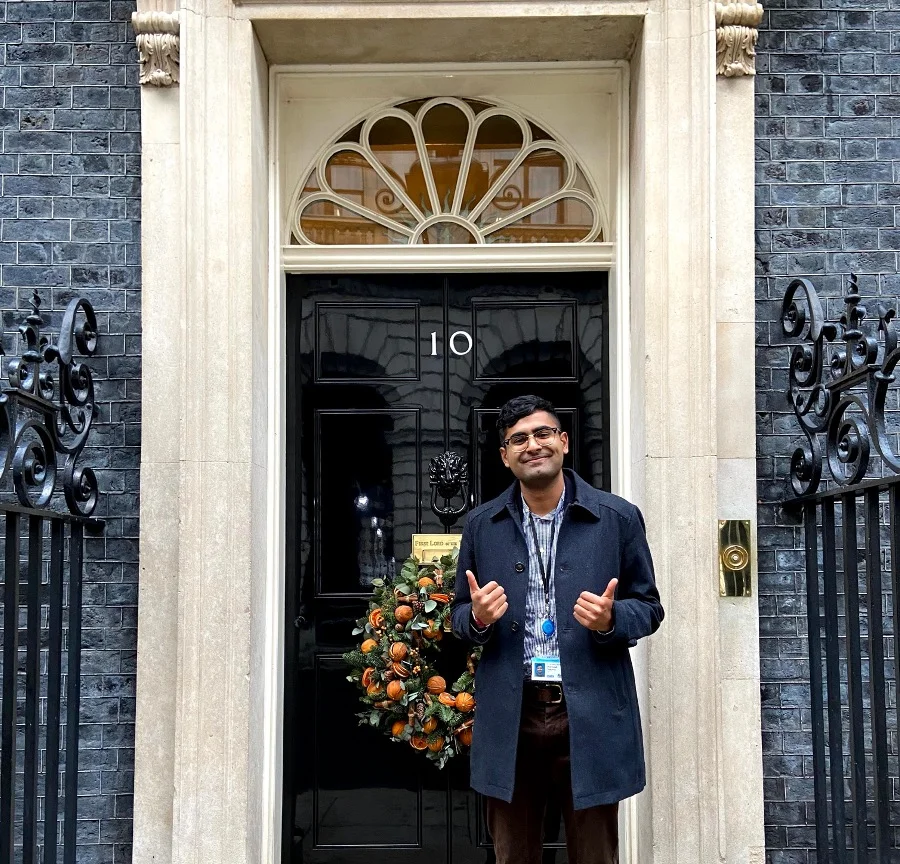I recently completed a discovery looking at how digital professionals can work better with policy professionals.
As part of the discovery, I conducted user research with policy professionals to better understand how they work, their challenges and pain points.
Why do this work?
This work was inspired by my team’s past involvement with policy teams. Using design thinking, service design and user research, my team and I had a real impact on the way policy was formed. My team and I believe these techniques can be used in other policy areas. Our intention is to empower policy professionals to think about their policy in a different way. This is why this work was commissioned.
I want to ensure the user is at the heart of the policy.
What we were hoping to achieve?
-
Improve ways of working with policy professionals.
-
Identify areas for intervention in the policy making process.
-
Understand how long we should engage with policy professionals.
-
Identify what our engagement with policy professionals should look like.
Ultimately, we want to create a collaborative model for policy making and implementation with digital professionals.
What I did
I spoke with policy professionals and other functions (digital communication, commercial, analysts) across government.
I also looked at a wealth of material produced by the policy profession, the excellent Policy Lab and DWP.
I’m not the only one looking at how digital professionals can work better with policy professionals!
I also created personas and user needs from my user research.
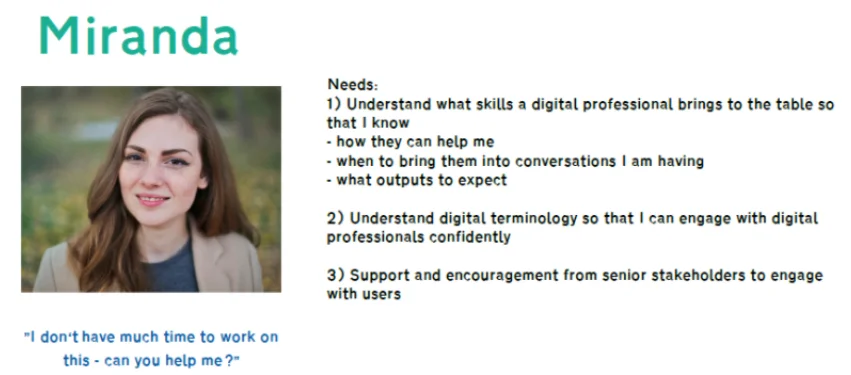 This is snapshot of one of the personas I created (not all information is included). Miranda has no capacity but wants support on a project.
This is snapshot of one of the personas I created (not all information is included). Miranda has no capacity but wants support on a project.
Experience mapping
With a policy professional, I mapped out their end to end policy journey (see image below). Together, we captured tasks, time to complete task, emotions, challenges and identified opportunities.
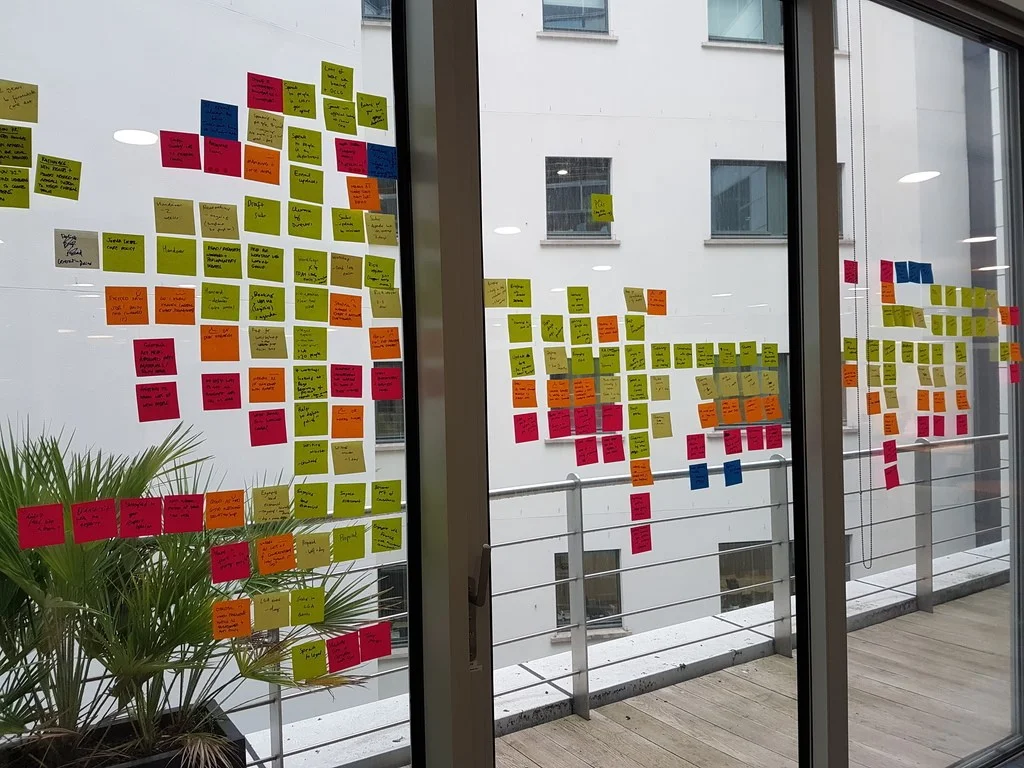 All you need is post it notes!
All you need is post it notes!
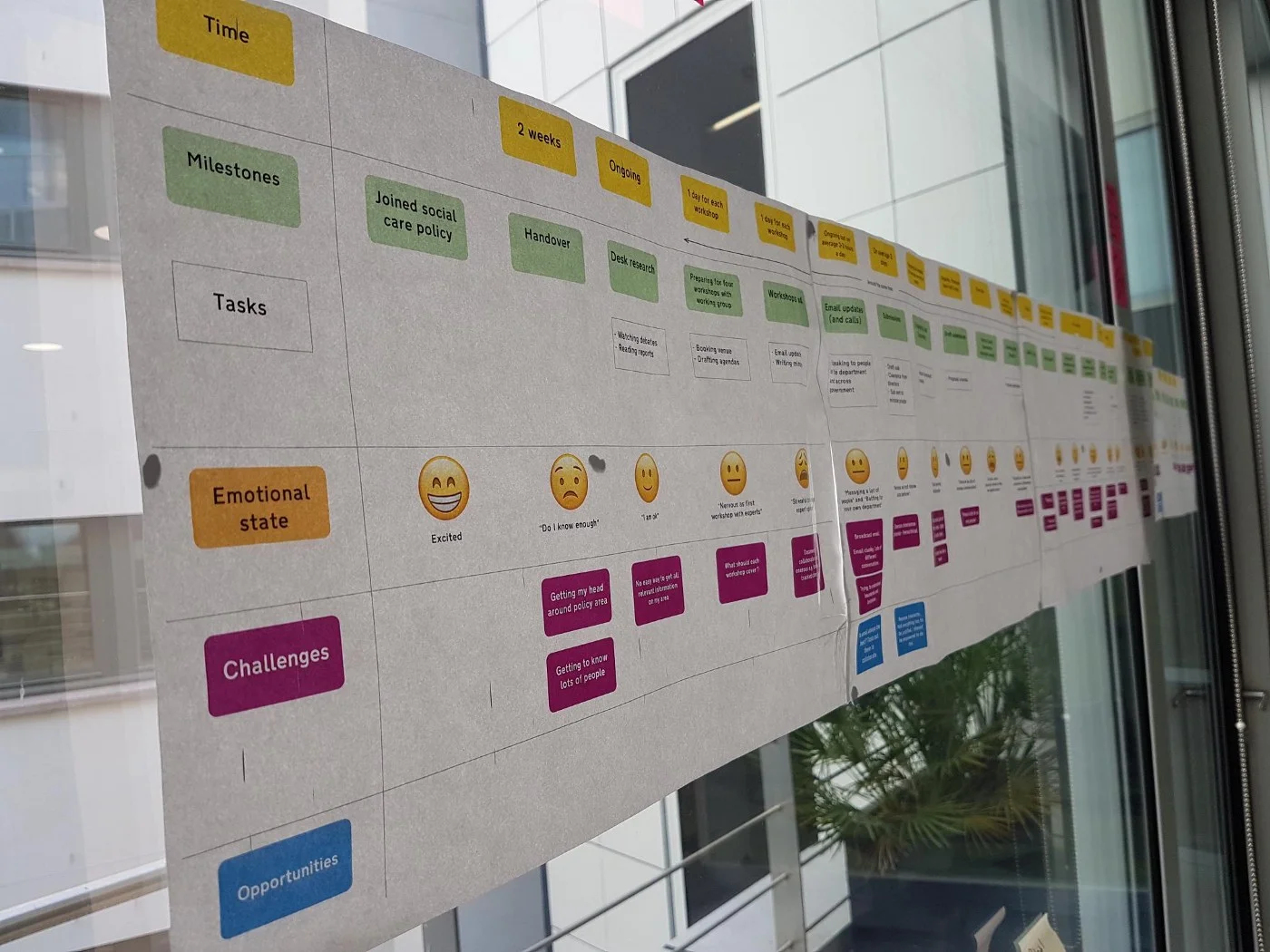 Creating a experience map enables you to have interesting conversations with policy professionals. It’s tangible and gets people thinking about how their own experiences map to this particular journey.
Creating a experience map enables you to have interesting conversations with policy professionals. It’s tangible and gets people thinking about how their own experiences map to this particular journey.
What I learnt
Policy process
In theory, there is a process in which policy is created. In reality, the policy process is not linear. There are spikes in activity and then lull periods.
At any one point, a policy professional could be organising a workshop, taking part in workshops, writing emails, drafting submissions, engaging with lead economics, speaking to lawyers, briefing directors and completing risk registers. That’s a lot of things!
Interestingly, when creating the experience map exercise, there was no mention of digital.
Activities common in policy making
The policy making process might not follow a stereotypical order but there are common activities that take place:
-
Defining the problem What’s the problem you are trying to solve?
-
Engagement What do people think about the policy?
-
Respond and advise Dealing with requests and advising ministers
-
Research and analysis What does the literature say?
-
Balancing opinions What are other government departments saying?
-
Leverage expertise What do Lawyers, Economists, Commercial and Communication experts think?
-
Evaluate What impact will the policy have?
-
Develop a plan What do we need to do to make this policy a reality?
-
Governance How do we ensure the policy is staying on track?
How other teams are working with policy teams
Across government (and the world), there are teams that are working with policy professionals in exciting ways.
Some teams surround the policy professional with a multidisciplinary team (see MoJ). Other teams make experiences tangible by prototyping (see DfT Labs). Policy Lab, the most notable, have the Open Policy Making Toolkit to give policy professionals the tools to think about their policy in different ways.
“Prototyping can be the catalyst for changing policy”
Language
Policy professionals and digital professionals are saying the same thing!
For example, digital professionals often talk about retrospectives (reflecting on a piece of work). In policy lingo, retrospectives equates to ‘wash ups’ or ‘looking back’.
Collaboration
Policy professionals see themselves as generalists adept at working with specialists. Policy professionals collaborate with Lawyers, Economists and other professionals all the time.
On Digital
Some policy professionals don’t understand what digital professionals bring to the table. An Economist produces an impact assessment or a Lawyer produces regulations, what does a digital professional produce?
“Most people don’t understand what digital means. It means different things to different people.”
Equally, understanding amongst some digital professionals about policy making is poor.
Something to think about further: how might policy makers hold digital professionals to account in the things they say and do?
Engagement
Policy professionals recognise the value of speaking with users. The challenge policy professionals face is confidence in engaging users without raising people’s expectations.
Where do policy professionals think we should be involved in?
-
‘When there is a digital element to the policy’
-
Engagement
-
Consultations
-
When meeting suppliers or having technical conversations
-
Policy implementation
-
Evaluation
How we move forward
As a digital professional, it would be difficult to engage with policy professionals from the beginning because the policy making process is complicated and non-linear.
We do know though that there are consistent activities in policy making.
Idea: developing discrete work packages for stages of policy making and policy professional personas**
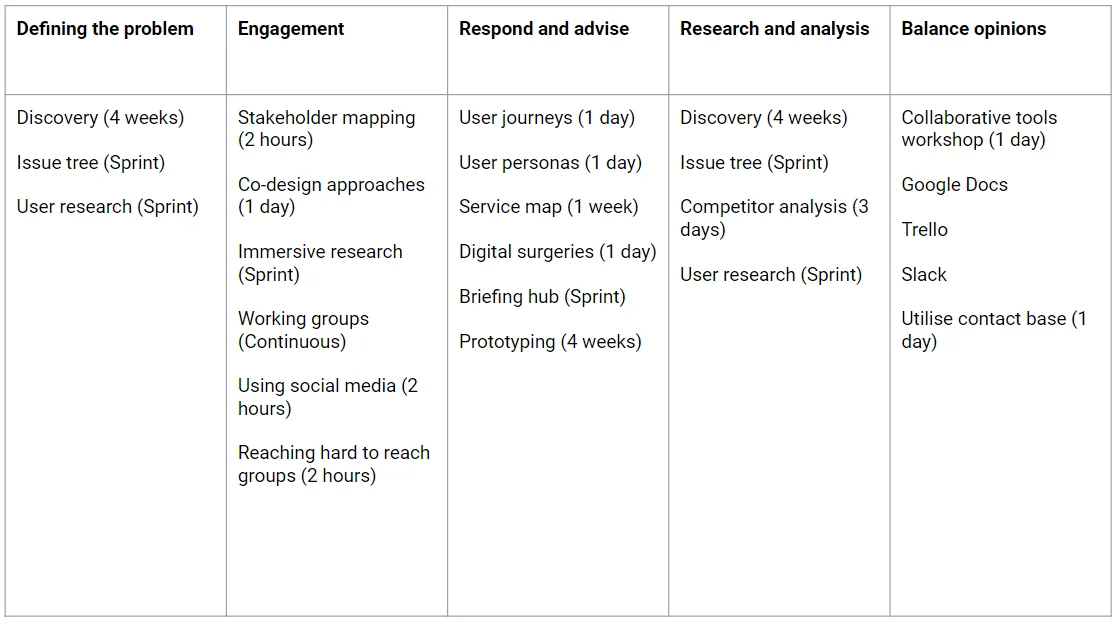 An initial attempt looking at work packages, we could offer to policy professionals at each stage of the policy making process.
An initial attempt looking at work packages, we could offer to policy professionals at each stage of the policy making process.
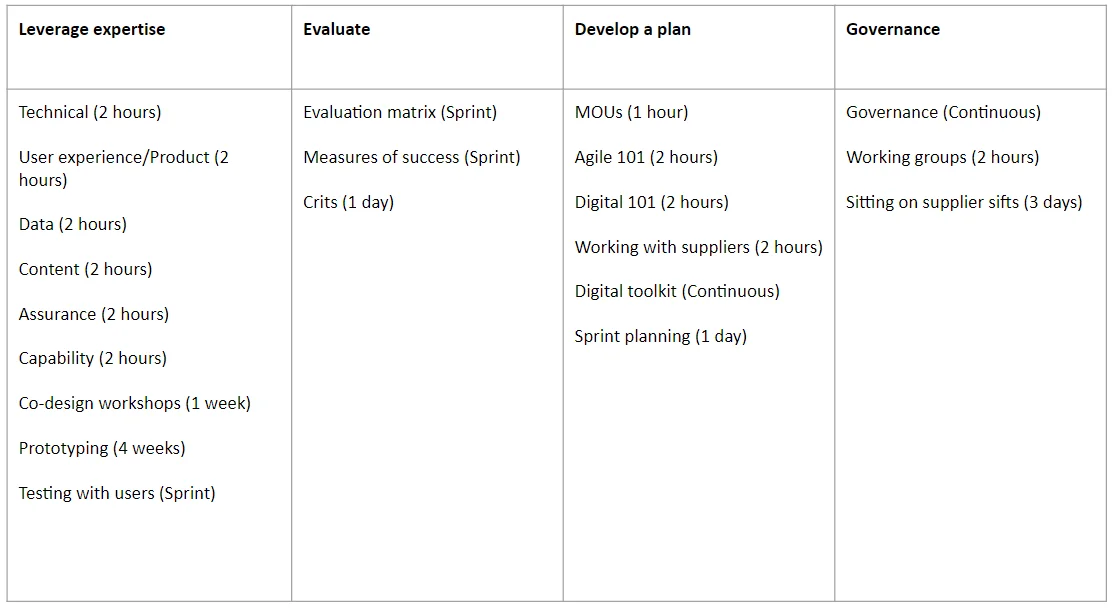 A continuation of the table above. This is by no means what the final product will look like. It’s just an attempt to get the conversation started. These packages should be co-created with policy professionals.
A continuation of the table above. This is by no means what the final product will look like. It’s just an attempt to get the conversation started. These packages should be co-created with policy professionals.
Conclusion
In the next phase of work, I want to think about in more detail:
-
What our engagement with policy professionals will look like.
-
What our outputs (as digital professionals) looks like.
-
How to set expectations with policy professionals of what interacting with a digital professional will look like.
-
What projects we should be involved with.
Ultimately, improving our ways of working with policy professionals will lead to services that meet user needs. I leave you with this final quote:
“We learned to create space at the policy making table by making future experiences tangible”
Thanks for reading, and please do get in touch if you have any comments/suggestions.
A final thank you to everyone who helped with this piece of work!

